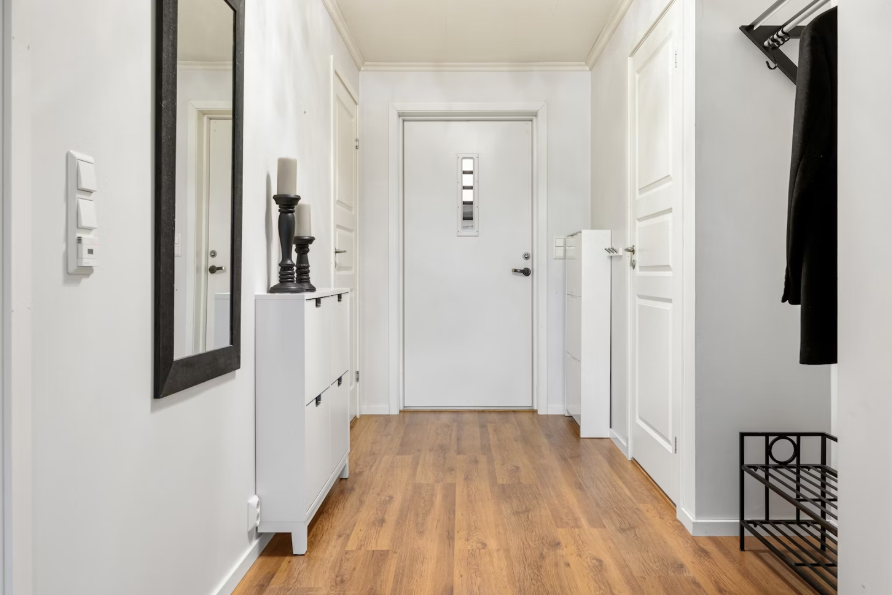
When it comes to choosing interior doors for your home, the decision often comes down to two popular options: solid core doors and hollow core doors. Both types have their unique characteristics, advantages, and drawbacks, making it essential to understand which option best suits your needs, preferences, and budget. Whether you’re renovating your home or building from scratch, selecting the right door is a crucial step in achieving the perfect balance of functionality, style, and durability.
In this blog post, we’ll explore the differences between solid core doors and hollow core doors, their benefits, and how to choose the right one for your home.
What Is a Solid Core Door?
A solid core door is constructed with a dense interior core made of engineered wood, particleboard, or MDF (medium-density fiberboard). This core is then covered with a veneer or laminate layer that gives the door its finished appearance. Solid core doors are designed to mimic the look of traditional solid wood doors but at a more affordable price point.
Key Features of Solid Core Doors:
– Durability: Solid core doors are heavy and sturdy, making them resistant to wear and tear. They can withstand impact better than hollow core doors.
– Soundproofing: Due to their dense construction, solid core doors offer excellent sound insulation, making them ideal for bedrooms, home offices, or spaces where privacy is crucial.
– Aesthetic Appeal: With their premium look and feel, solid core doors add a touch of sophistication to your home interior.
– Weight: The density of the core makes these doors heavier than hollow core doors, which can be a consideration during installation.
What Is a Hollow Core Door?
Hollow core doors, on the other hand, are lightweight and cost-effective options made with a hollow or honeycomb structure inside. The outer layers are typically composed of plywood or molded composite material. While they may lack the density of solid core doors, they are still widely used in homes due to their affordability and versatility.
Key Features of Hollow Core Doors:
– Lightweight: Hollow core doors are easier to handle and install due to their reduced weight.
– Affordability: These doors are budget-friendly and ideal for homeowners looking for economical solutions.
– Basic Sound Insulation: While they do provide some level of soundproofing, they are less effective compared to solid core doors.
– Variety: Hollow core doors come in various designs and styles, allowing homeowners to find options that suit their aesthetic preferences.
Comparing Solid Core Doors and Hollow Core Doors
To help you decide between solid core and hollow core doors, let’s break down their differences in key areas:
1. Durability
Solid core doors are significantly more durable than hollow core doors. Their dense construction makes them resistant to dents, scratches, and other forms of damage. Hollow core doors, while functional, are more prone to wear and tear over time due to their lightweight structure.
Winner: Solid Core Door
2. Soundproofing
If sound insulation is a priority for your home, solid core doors are the clear choice. Their dense material effectively blocks noise from traveling between rooms. Hollow core doors provide minimal soundproofing, making them less ideal for spaces where privacy is essential.
Winner: Solid Core Door
3. Aesthetic Appeal
Solid core doors often have a more premium appearance that mimics the look of solid wood. They add a high-end feel to your home interior. Hollow core doors can also be stylish, but may not provide the same level of sophistication.
Winner: Solid Core Door
4. Cost
Hollow core doors are much more affordable than solid core doors, making them an attractive option for homeowners on a tight budget. Solid core doors tend to be pricier due to their construction and material quality.
Winner: Hollow Core Door
5. Weight
Solid core doors are heavier than hollow core doors. While this adds to their durability and soundproofing capabilities, it can make installation more challenging. Hollow core doors are lightweight and easier to manage during installation.
Winner: Hollow Core Door
6. Energy Efficiency
Solid core doors provide better insulation against temperature fluctuations compared to hollow core doors. This can contribute to improved energy efficiency in your home by reducing drafts and maintaining indoor temperatures.
Winner: Solid Core Door
Which One Is Right for Your Home?
Choosing between solid core and hollow core doors ultimately depends on your priorities and budget. Here’s a quick guide to help you decide:
1. Choose Solid Core Doors If:
– You want durable and long-lasting interior doors.
– Soundproofing is important for your living spaces.
– You prefer a premium aesthetic that enhances your home’s value.
– Budget is not the primary concern.
2. Choose Hollow Core Doors If:
– You’re looking for an affordable option.
– You need lightweight doors that are easy to install.
– Soundproofing is not a top priority.
– You want a variety of designs at a lower price point.
Conclusion
Both solid core and hollow core doors have their unique advantages, making them suitable for different scenarios. Solid core doors excel in durability, soundproofing, and aesthetics, while hollow core doors offer affordability and ease of installation. By understanding your specific needs and priorities, you can make an informed decision that enhances your home’s functionality and design.Remember, the right door can make all the difference in creating a comfortable and stylish living environment. Explore OPPOLIA Door today to discover premium options that combine functionality with elegance. Get a free quote and take the first step toward creating your ideal home interior!


